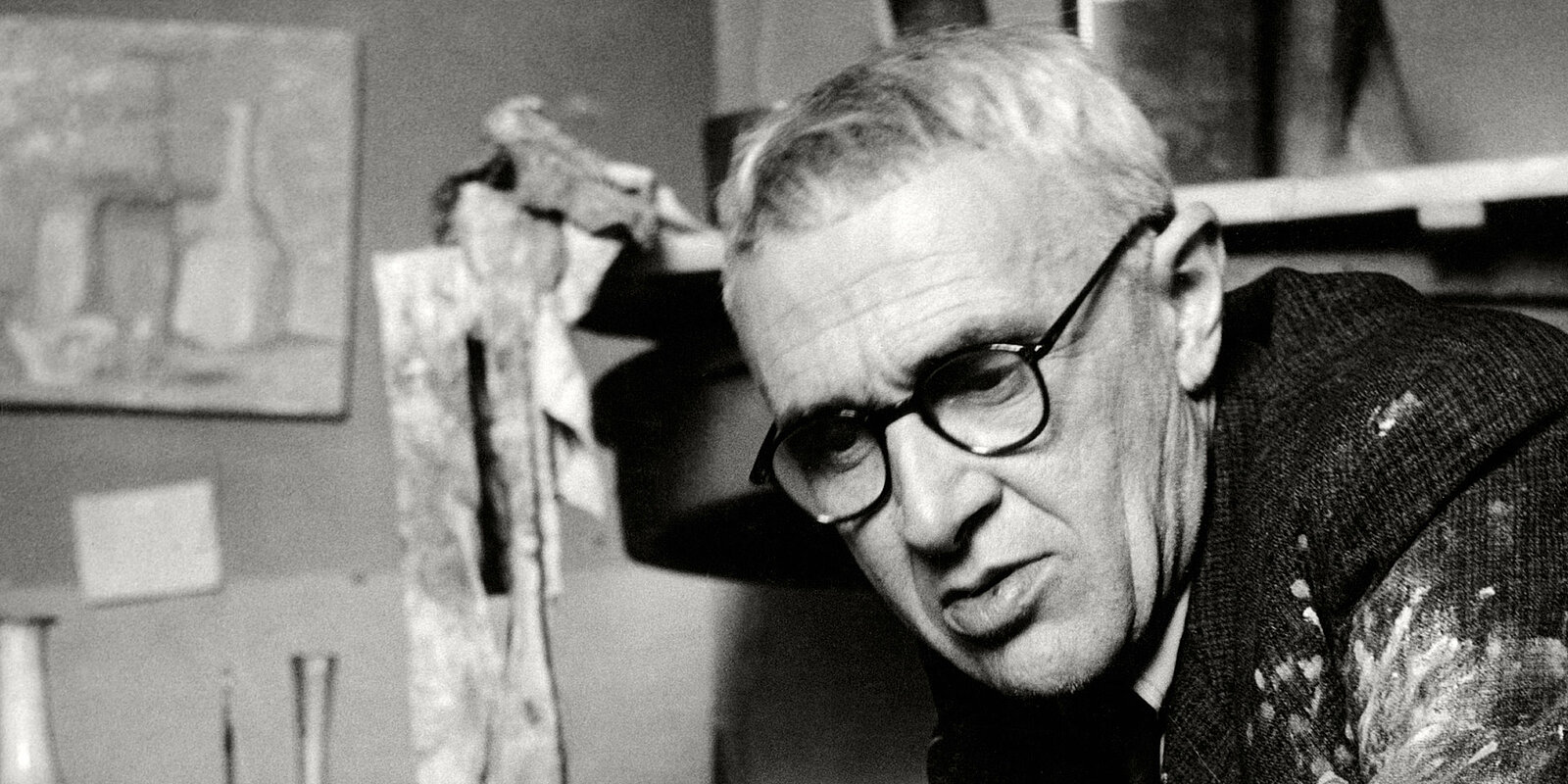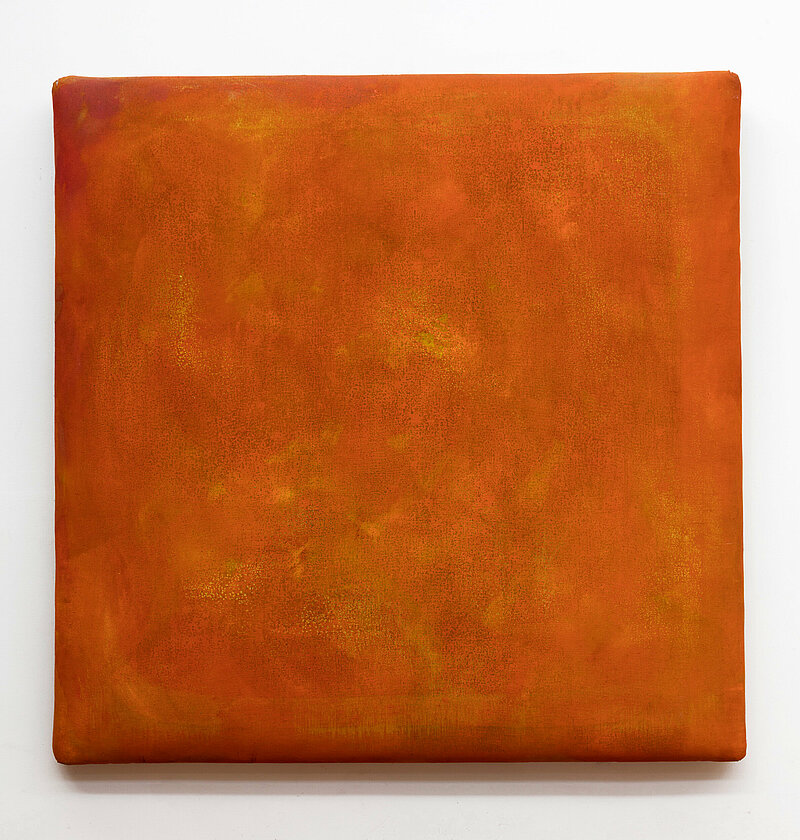
Giorgio Morandi (1890 – 1964) was specialized in still life and landscapes. His paintings are noted for their tonal subtlety in depicting apparently simple subjects, which were limited mainly to vases, bottles, bowls, flowers and landscapes. With great sensitivity to tone, color, and compositional balance, he would depict the same familiar bottles and vases again and again in paintings notable for their simplicity of execution. Although born and brought up in a petty-bourgeois family his father was in a position to further his great son through. From 1908 to 1913 Morandi studied at the Accademia di Belle Arti di Bologna. At the Accademia Morandi taught himself to etch by studying books on Rembrandt. Even though he spent his entire life in Bologna, Morandi was influenced by the works of Cézanne, Derain, and Picasso. In 1914, Morandi was taken on as a drawing teacher in elementary schools in Bologna, a position he held until 1930.
In 1915, he joined the army but suffered a breakdown and in 1917, he was indefinitely discharged from the forces. During the war, Morandi’s still lifes became more and more simplistic in their compositional elements and purer in form. The Pittura Metafisica phase in Morandi’s work lasted from 1918 to 1922. From 1930 to 1956, Morandi was professor of printmaking at Accademia di Belle Arti. The 1948 Venice Biennale awarded him first prize for painting. When Morandi died in 1964, he was a world famous painter. His works are now owned by and exhibited in international museums and private collections.
Exhibitions
Publications
Exhibitions
Musée de Grenoble, Grenoble, France
Fundación MAPFRE, Madrid, Spain
Castello di Rivoli Museum of Contemporary Art, Turin, Italy
Museo Morandi, Bologna, Italy
M WOODS, Chaoyang, Beijing, China
MAMbo, Casa Morandi, Bologna, Italy
Guggenheim Museum Bilbao, Bilbao, Spain
Städtische Galerie Villingen-Schwenningen, Villingen-Schwenningen, Germany
Galerie Karsten Greve, Cologne, Germany
Galerie Karsten Greve, Paris, France
Repetto Gallery, London, UK
The Pushkin Museum of the Fine Arts, Moscow, Russia
Museo di Castello di San Materno, Ascona, Switzerland
Prefectural Museum of Art, Hyogo, Japan, travelled to, Station Gallery, Tokyo, Japan, Iwate Museum of Art, Iwate, Japan
CIMA, New York, NY, USA
Instituto Centrale per la Grafica – Calcografia, Rome, Italy
Complesso del Vittoriano, Romae, Italy
David Zwirner, New York, NY, USA
Deaksungung –National Museum of Modern and Contemporary Art, Seoul, Korea
BOZAR-Palais des Beaux-Arts, Brussels, Belgium
Museo d'Arte di Lugano, Lugano, Switzerland
Kunsthaus Kaufbeuren, Kaufbeuren, Germany
Museo de Arte Abstracto Español, Cuenca, Spain
Galleria Frediano Farsetti, Cortina d'Ampezzo, Italy
Museu d’Art Espanyol Contemporani (Fundación Juan March), Palma de Mallorca, Spain
Galleria d'Arte Maggiore, Bologna, Italy
Museo Fortuny, Venice, Italy
Fundación Juan March, Madrid, Spain
Galleria Torbandena, Trieste, Italy
Galerie Karsten Greve AG, St. Moritz, Switzerland
Learn moreMGKSiegen, Siegen, Germany
MGKSiegen, Siegen, Germany
Palazzo Cini, Venice, Italy
Estorick Collection of Modern Italian Art, London, UK
Galleria Nazionale d'Arte Moderna, Rome, Italy
High Museum of Art, Atlanta, GA, USA
Museum of Fine Arts St. Petersburg, FL, USA
National Museum of Art, Osaka, Japan
Museum Folkwang Essen, Essen, Germany
Center for Italian Modern Art, Soho, New York, NY, USA
Galerie Karsten Greve AG, St. Moritz, Switzerland
Fondazione Prada, Milan, Italie
Galleria d’Arte Maggiore, Bologna, Italy
Tate Liverpool, UK; travelled to: MMK - Museum für Moderne Kunst, Frankfurt am. Main, Germany, Centre Pompidou, Metz, France
Virginia Museum of Fine Art, Richmond, VA, USA
Fridericanum, Kassel, Germany
Galleria il Gabbiano, Rome, Italy
Galleria dello Scudo, Verona, Italy
Musée National d’Art Moderne, Paris, France
Haus der Kunst, Munich, Germany
